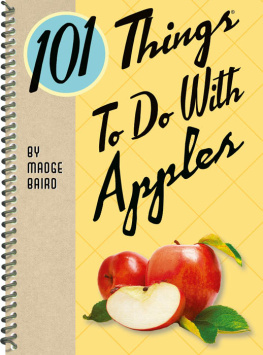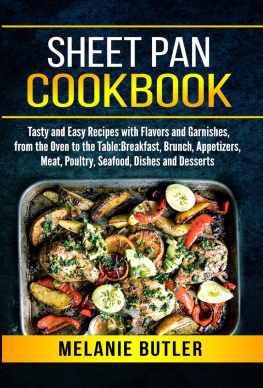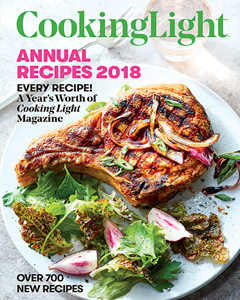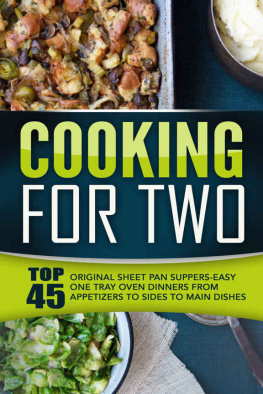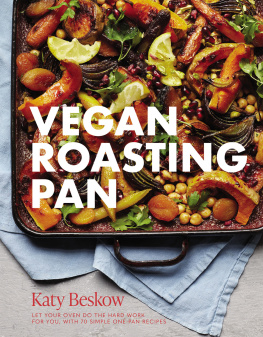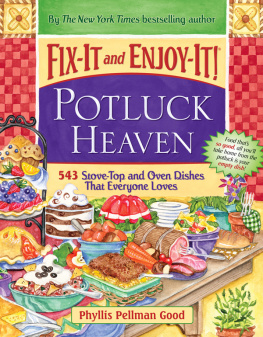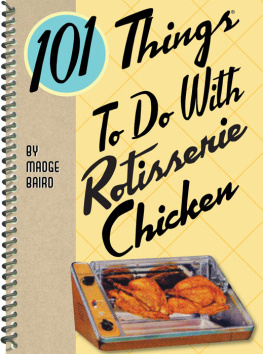Helpful Hints
The recipes in this book have been tested using primarily an electric oven. Since the age of an electric oven can often affect temperature, cook times may need to be adjusted. This goes for gas ovens and convection ovens as well, since temperatures can be slightly different. Also, burnt-on grease and grime in your oven will affect baking time and cause flavor issues, so keeping a clean oven is key to flavorful food and faster cooking.
Monitoring the progress of your food and then turning the oven temperature up or down during cooking, as well as rotating the pan, might allow you better control over the end result for some recipes.
For the purpose of this cookbook, all references to sheet pan mean half-sheet pan (18 x 13 inches), unless otherwise noted. This is the size most home cooks have on hand. If you have an oven large enough to accommodate a full-size sheet pan (26 x 18 inches), that will work as well. The dessert recipes are proportioned for quarter-sheet pans (9 x 13 inches), but can easily be doubled to cook on a half-sheet pan if you want more servings.
It is imperative that you get to know your oven and how it cooks. If you try a recipe and it doesnt cook in the amount of time indicated, make notes as to whether your food was too dry or overcooked, or if it required more cooking time, so when you make the recipe again you will know what adjustments to make.
Most of the recipes in this book serve 4, and many of the meals can be cooked on just one sheet pan. If you are less confident about managing different foods on the same sheet pan, it is perfectly fine to use two pans, placing one on the center oven rack and one above center.
Sheet pan cooking works best using heavy-duty pans; thinner pans will buckle in high heat and may not protect your foods from burning.
To oil or not to oil the sheet pan? If the food you will be cooking is coated in oil as part of its preparation, you dont need to oil the baking sheet. Each recipe specifies my recommendation on this matter.
Oil vs. nonstick spray? I usually prefer to brush oil on the sheet pan (or spread it on with a folded paper towel), because nonstick spray sometimes sticks to the pan at high heat and forms a sticky golden film, requiring a bit more time for cleanup.
Unless specified in the recipe, I do not line the sheet pan with parchment or aluminum foil. The main reason is that direct contact with the sheet pan aids in browning and produces a nice caramelization on some foods. Also, cleaning a sheet pan is relatively easy, so saving a few more minutes by using surface protectors doesnt seem worth the expense to me.
Cooking temperatures specified in these recipes are not absolute. If you want to combine recipes from different meals together, even though the recipe temperatures differ, you can make it work by using the higher temperature, and keeping an eye on the foods that cook faster and removing them when done, or by adding foods that have a quicker cook time later so that everything finishes at the same time.
The best place for the oven rack is in the center of the oven unless otherwise stated in the recipe. If you are cooking on two sheet pans simultaneously, I recommend the lowest sheet pan be in the center of the oven and the second sheet pan placed above it. You can switch the pans halfway through the cook time for more even cooking.
If you want a char or caramelization on your food and the recipe directions dont result in that for you, return your food to the oven at a higher temperature for a short time; keep a close eye on it. Alternatively, you can broil the food at the end of cooking for a couple of minutes to develop color. However, beware: There is only a hairs difference between the seductiveness of char and the bitterness of burned food. But, heydont be afraid to experiment!
Recommended seasoning blends to keep on hand for recipes in this book: Italian, Mexican or Southwest blend, herbes de Provence or other French blend, Cajun blend, garlic and herb, mesquite.
When cooking vegetables that contain a significant amount of water, such as zucchini or butternut squash, its a good idea not to overfill your sheet pan. Leave space between the pieces so they will get heat from all sides. Otherwise, they have a tendency to release liquid to the pan and steam instead of dry roasting. Thats fine if you plan to use the squash in another recipe where it will be pureed, but its harder to get caramelization if the vegetables steam.
Appetizers
Ciao Italian Stuffed Mushrooms
Simple ingredients, easy preparation, and tasty results makes this a party-friendly appetizer for the host.
Oven temp: 350 degrees
Cook time: 2530 minutes
Serves 68
8 ounces medium-size whole mushrooms
2 slices wheat bread
1/2 cup mascarpone cheese, room temperature
1/2 teaspoon Italian herb blend seasoning
1/2 teaspoon salt
2 tablespoons chopped fresh parsley
Preheat oven to 350 degrees. Prepare sheet pan with a light coating of oil.
Remove and discard stems from mushroom caps, brushing off any dirt.
Cut bread slices into tiny cubes and combine in a bowl with the mascarpone, herb seasoning, and salt. The mixture will be coarse. Spoon stuffing into each mushroom cap and place on the sheet pan. Lastly, sprinkle the parsley over all the mushrooms. Bake until mushrooms are tender, 2530 minutes.
Green Crisps
A thrifty kitchen finds a way to utilize all the edible parts of every food. The next time you cook beets and/or carrots, why not turn those greens into flavorful, crispy wafers? Bake in two or three batches; it only takes a few minutes. These fun additions to your appetizer offerings will get people talking!
Oven temp: 350 degrees
Cook time: 710 minutes per batch
Serves 610
Leaves from 1 bunch organic beets
1 tablespoon extra virgin olive oil
Leafy tops from 1 bunch organic carrots
Sea salt or other coarse salt, to taste
Other seasoning (e.g., Cajun spice, paprika), optional
Preheat oven to 350 degrees. Line a sheet pan (or two) with parchment or a baking mat.
Rinse the beet leaves and lay flat between paper towels to dry. Then toss dry leaves with oil, lightly coating all the leaves. Spread on the pan, trying not to overlap. Sprinkle lightly with salt and other seasoning, if using. Bake until leaves dry out and start to crisp, about 5 minutes. Turn leaves over to dry the other side. Do not walk away, as it wont take long. Remove from oven and transfer to a serving plate when cool; okay to layer gently. Proceed with next batch.
Rinse carrot leaves and pat dry between paper towels. Break or cut into chip-sized pieces, discarding thickest stems. Arrange on a pan; slight overlapping is okay. Bake until leaves dry out and turn crisp, about 8 minutes.


